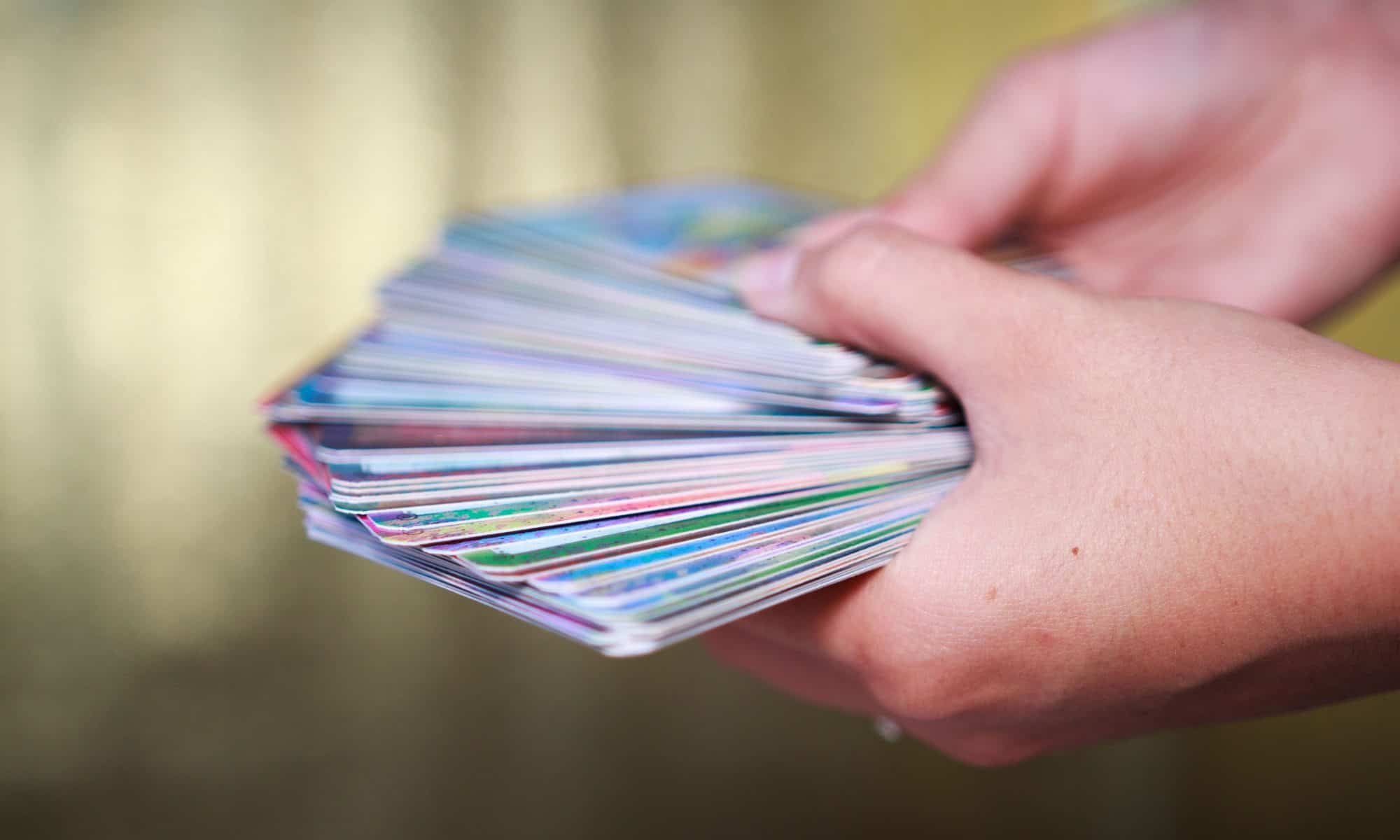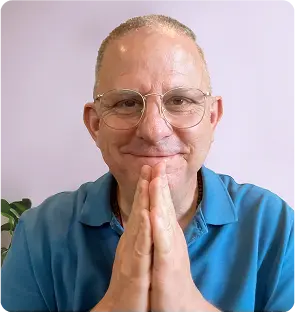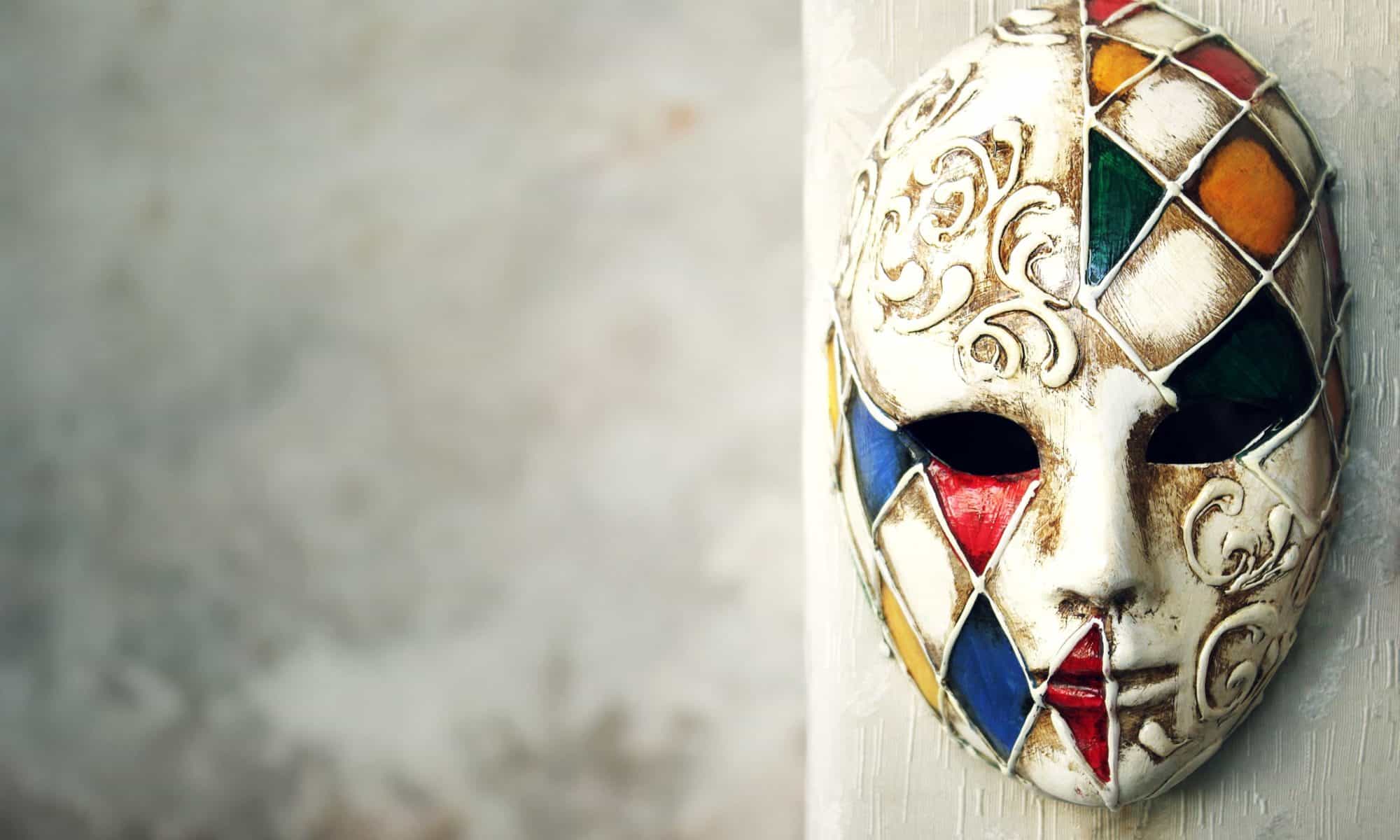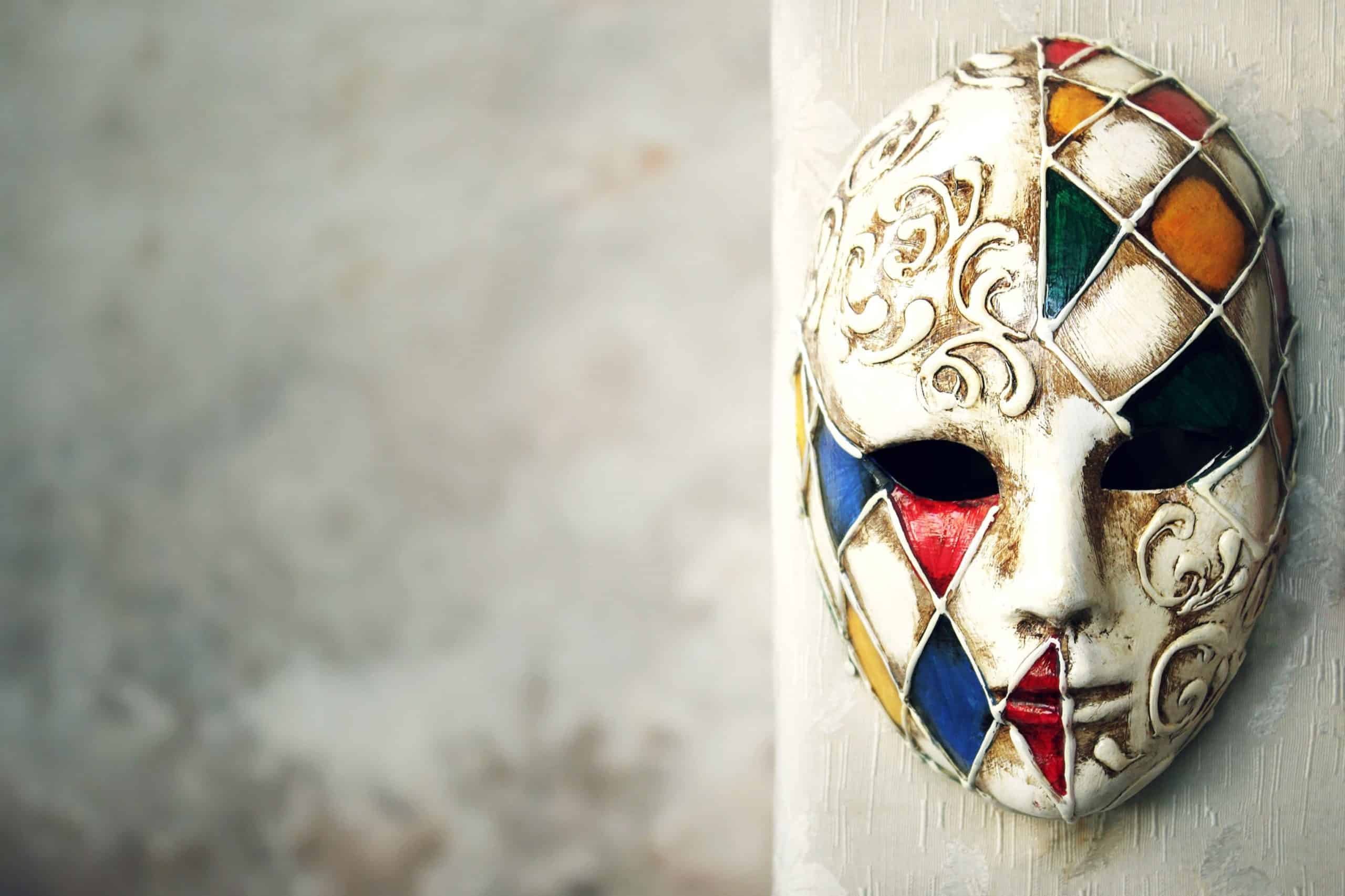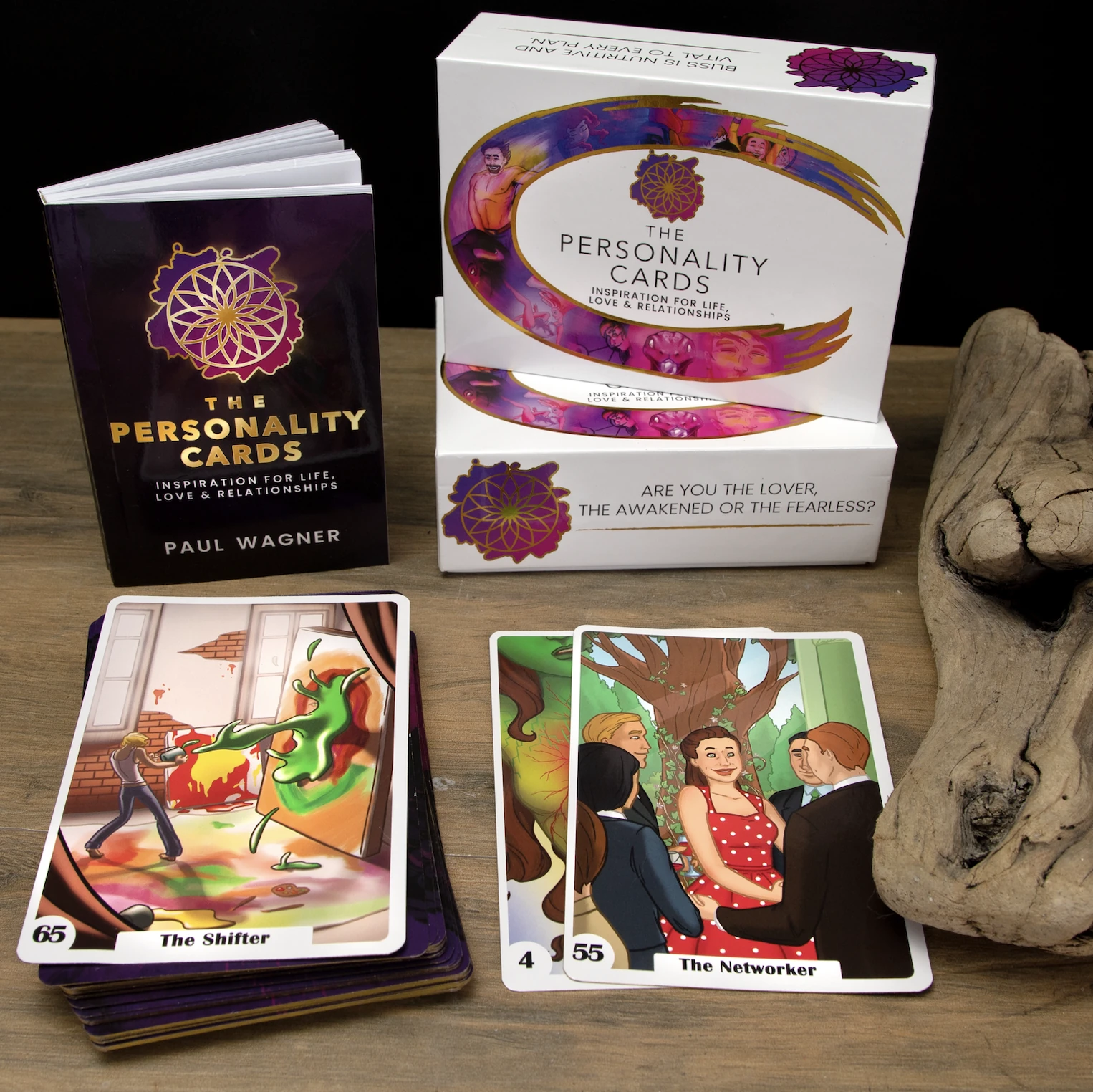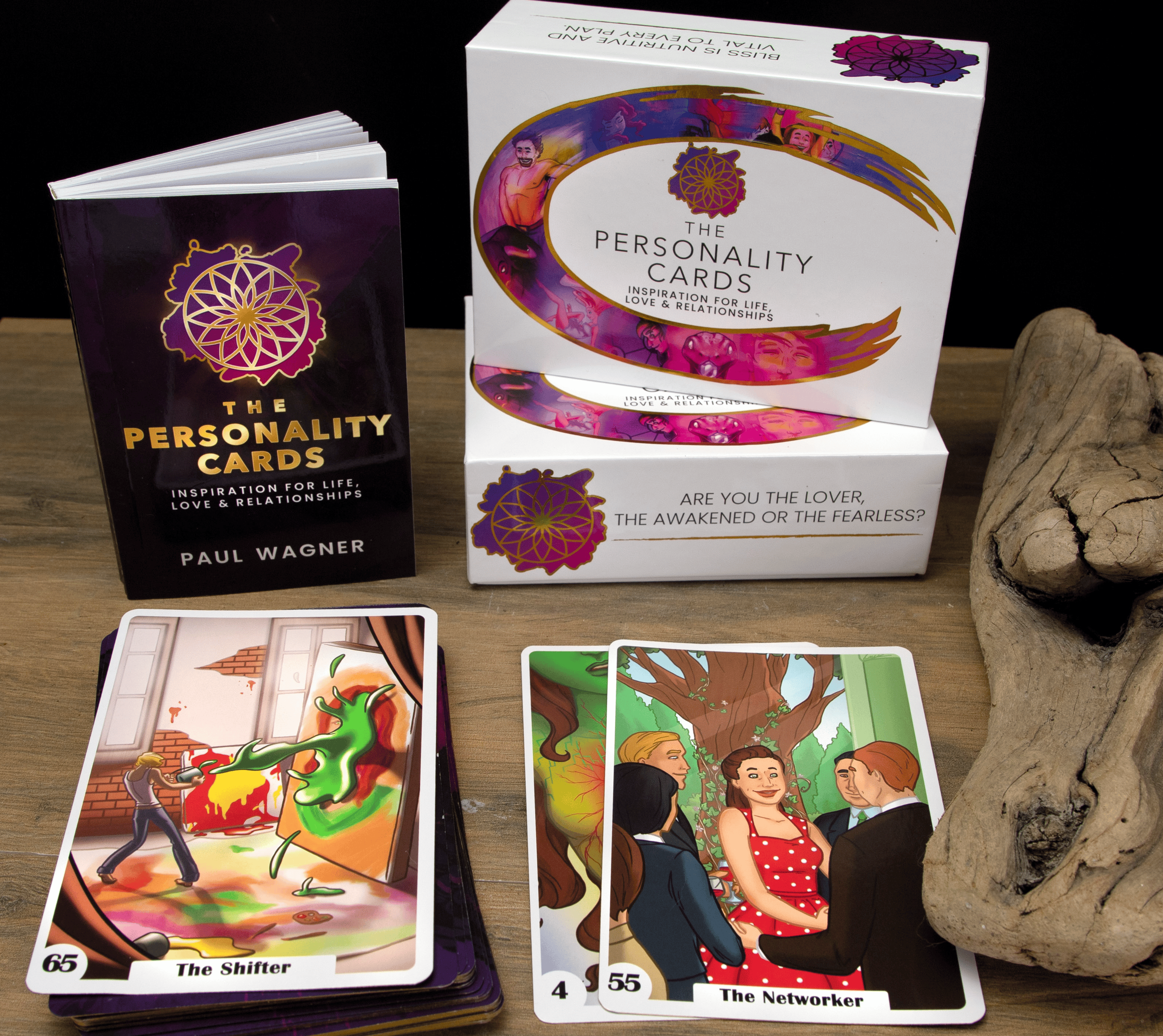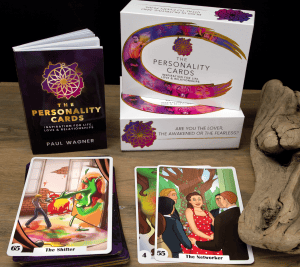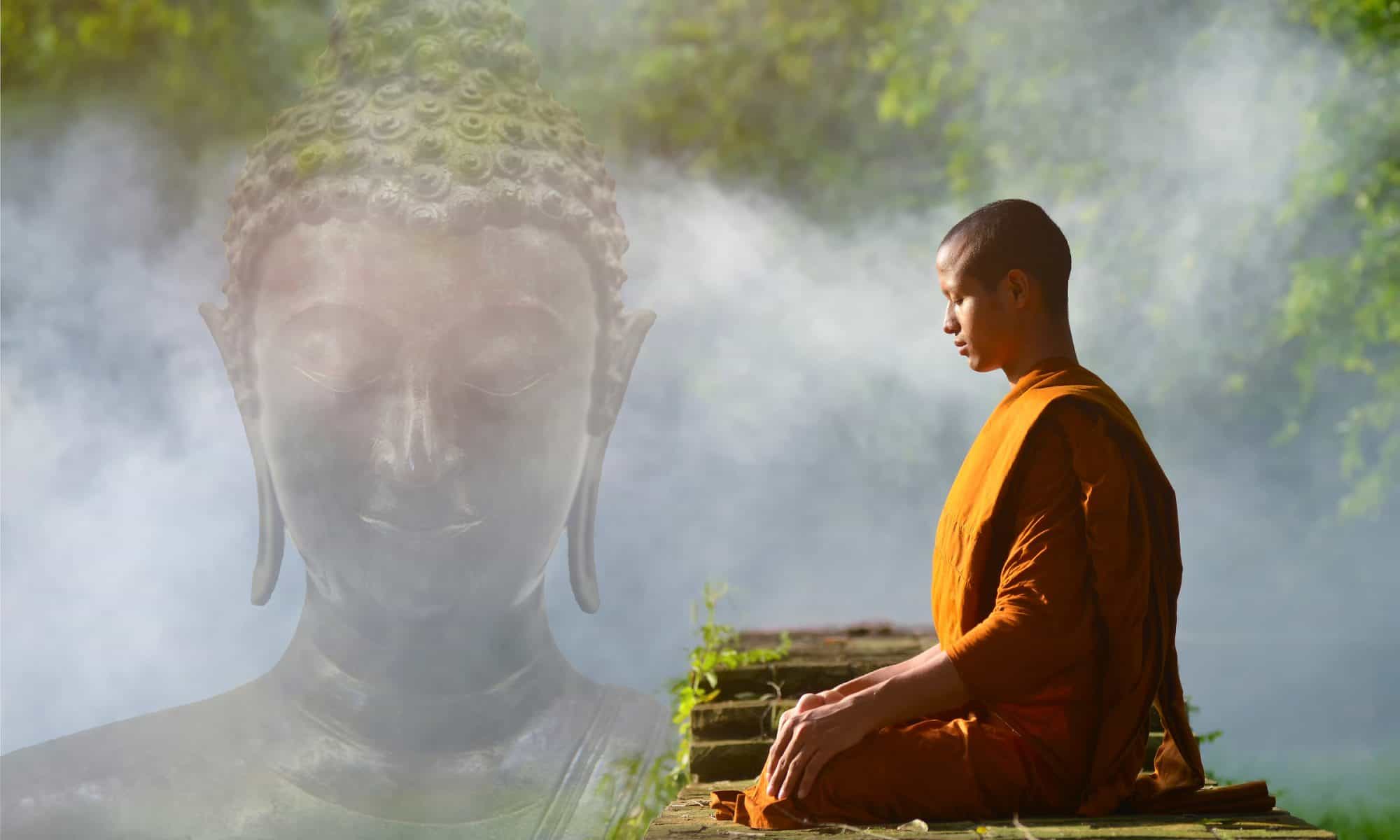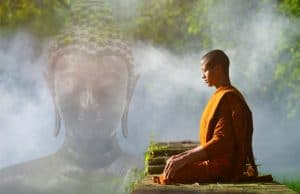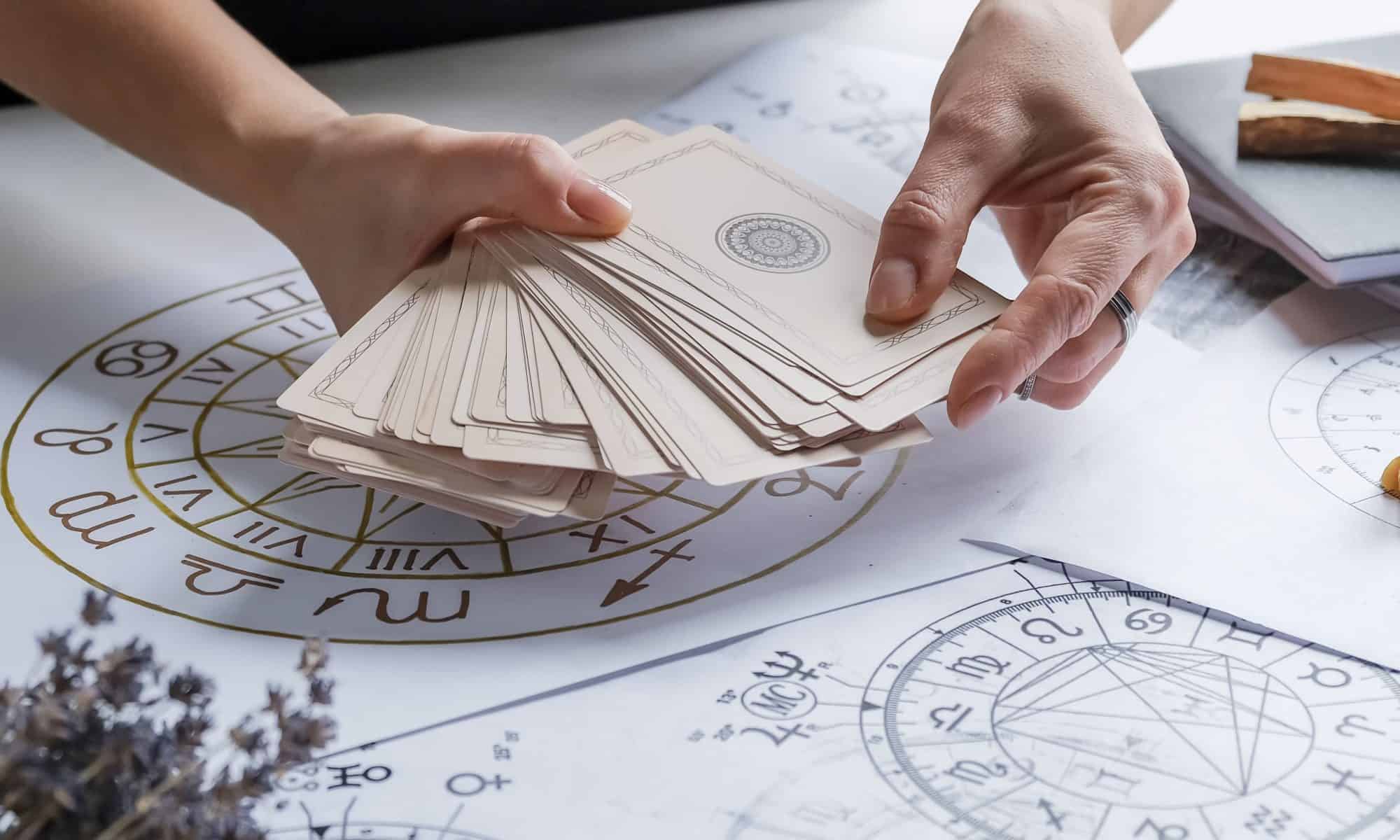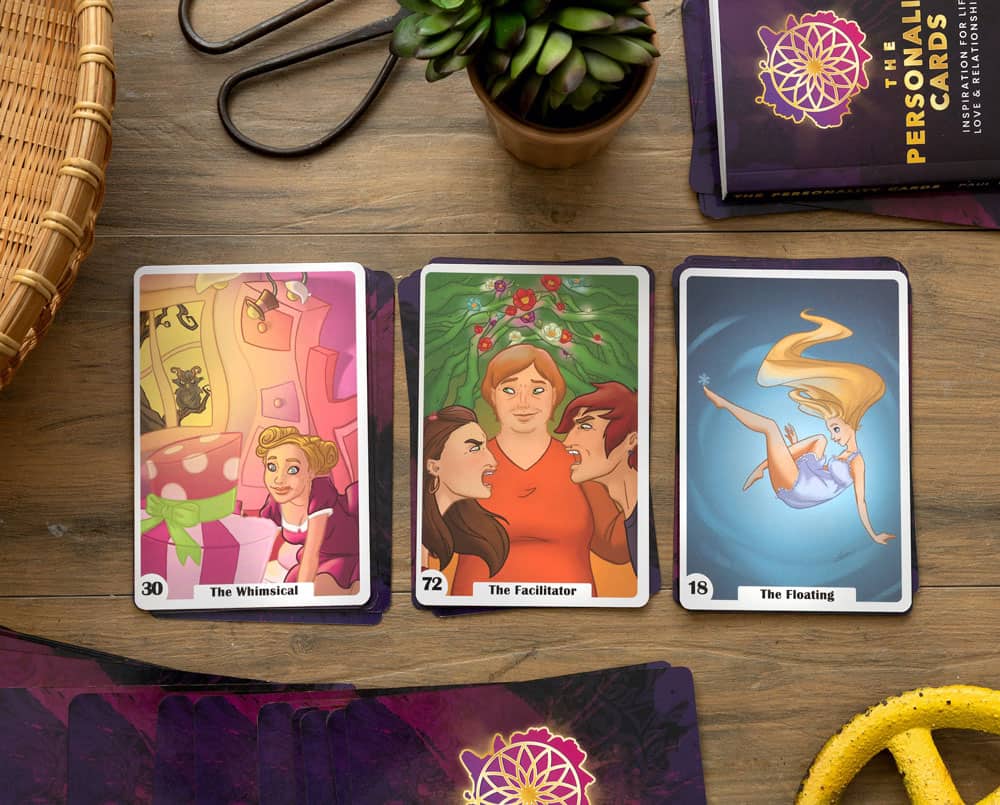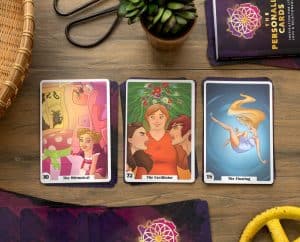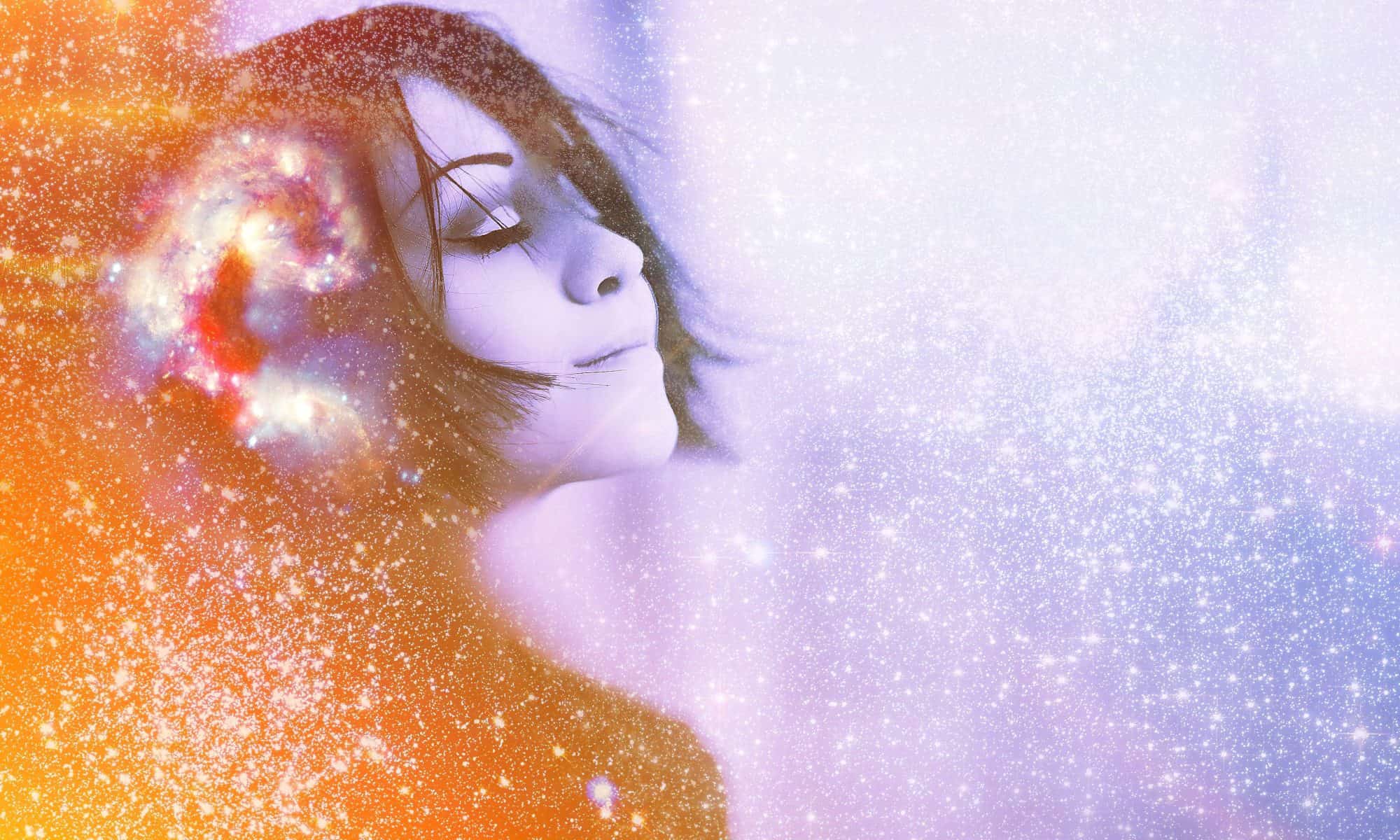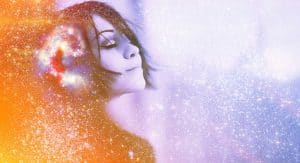
Have you ever seen personality cards? Do you know how to use these cards? Personality cards are more specific oracles to our daily lives; they are helpful in forgiveness and our self-discovery journey, shedding a lot of light on improving our lives. The personality cards are a combination of psychological types: the Carl Jung personality archetypes, which form the basis of how to be human and how we experience things, and the Myer-Briggs Type Indicator test, a scientific test that helps you figure out your personality. The energy carried in a particular tarot archetype is that which is dominant in your deeper self. This makes the Personality Cards the most specific, eye-opening oracle to date.
Have you taken the MBTI test? The Myer Briggs Type Indicator Test(MBTI) is a free test that you can take online and tells you where you fit in the 16 personality profiles. These profiles are based on the Jungian theory. Four attributes make up the 16 types, and just like the archetypes, these attributes describe how one experiences the world. The four attributes are represented by letters;
-
-
- Introversion (I) or Extroversion (E)
- Intuition (N) or Sensing (S)
- Feeling (F) or Thinking (T)
- Perceiving (P) or Judging (J)
-
There are eight descriptions in these four attributes; the MBTI test tells you that you fit four of them out of the eight, and this forms a four-letter code like ISFJ. These personality types on the test have a correlation to 16 archetypes on the Minor Arcana or Lesser Arcana of the tarot deck, also called court cards; there is a King, Knight, Page, and Queen for each of the four suits; Wands, Swords, Coins, and Cups.
Other ways to calculate your soul and personality card
Apart from the MBTI test, some have come up with other ways of calculating the soul and personality card by using your birth dates. Your personality card will describe some of the traits you portray and help you see yourself from a different POV.
How do you use your birth dates to find your personality card?
It is simple! To use this oracle, you add the year, month, and day you were born in no specific order. After finding the total, add the digits of the total; if the sum of these digits is between 10 and 22, that number is your personality number. If the sum is more than 22, add the resulting number, and the answer you get will be your personality card. Your soul card is the resulting number from adding the digits of your personality card. Describing this in words makes it seem very complicated, maybe using an example would not make you scared of the math.
For someone born on 23rd August 1998,
23+8+1998=2029
2+0+2+9=13 is your personality card
1+3=4 is the soul card.
Here are the soul and personality cards that these numbers represent;
0 or 22 represented The Fool,
1-the Magician
2-the High Priestess
3-the Empress
4-the Emperor
5-the Hierophant
6-the Lovers
7-the Chariot
8-Justice
9-the Hermit
10-Wheel of Fortune
11-Strength
12-the Hanged Man
13-Death
14-the Temperance
15-the Devil
16-the Tower
17-the Star
18-the Moon
19-the Sun
20-the Judgement
21-the Universe
Which personality card are you? Find out today using your birth date; you can also calculate for your loved one! Be careful… this oracle is super powerful.
Oracle Profiles of the 16 personality archetypes that correlate with the MBTI test
- Page of Wands has a personality type ESTP; Extroversion Sensing Thinking Perceiving. This Page of Wands personality type is always ready for new adventures and challenges; they are very energetic, creative, enthusiastic, and brave and are not afraid to ditch an adventure midway when a new one emerges. They enjoy spontaneity and are flexible; they are always ready to explore new places, meet new people, and socialize with them. The Page of Wands’ personality is always the life of the party; he appreciates creative arts, dance, music, and art. To them, having fun is not always about having a lot of money; they make it possible to have fun with whatever resources they have. They are very talkative and outgoing. They need to feel important, and this makes them good group leaders. They enjoy shopping and understand the value of money; however, they are not materialistic. They desire to succeed and are eager to learn to attain excellence. Do you know someone who has these traits?
- Knight of Wands’ personality type is ENFP, the Magician. The Magician has a natural talent for leadership; if you have this personality, you are a born leader or manager. Your natural-born leadership helps you get things moving in the right direction; you have the enthusiasm to get things done in a short time and accomplish essential things in your organization. When in a leadership position, you relate better with others. You enjoy being a leader because you want to be a crucial part of the team and community; you enjoy moving the crowd with bold antics and big gestures and receiving attention.
- Additionally, you like to show off a bit. You always see the best in people and quickly spot mistakes and flaws. The Knight of Wands is exciting and charismatic despite not being consistent and reliable all the time.
- Queen of Wands has the personality type ESFP. The picture on this oracle card is a woman with a tall crown, holding a small crown and veil in one hand and, in the other, a wand. On the throne where she is seated, two lions are standing behind her. This personality loves attention and is very chatty, outgoing, and enthusiastic. They are friendly, very pleasant, warm, love being the life of the party, and like to have fun; however, they can also be serious and very determined. They have a creative side, get inspired by imagination, and are entrepreneurial. This personality type is committed to their career and family, very confident, and independent.
- The King of Wands strongly connects to intuition because it appears in the High Priestess position in the Tarot. The personality type is ENTJ, and some qualities it possesses include creativity and intelligence. The King of Wands is an influential and confident leader. He is also an adventurer who never tires of looking for new ways of thinking and experiences. He wants to use discovery to improve the world and always wants the best for those around him. He is a jack of all trades, an expert in scientific, artistic, and practical things. He loves great things and splurges only when he wants to feel good about himself. He is a charismatic and inspirational leader who motivates others to be proud of their accomplishments the same way he is, showing them they can be good at something. He is a natural leader; confident, open-minded, assertive, influential, and decisive.
- Page of Cups is the Peacemaker, and INFP is the personality type for this oracle card. If you are this personality type, you are a classic artist archetype, an artist, and a sensitive person who spontaneously expresses themselves. You are reciprocating the emotional investment you demand from others. You are an empath and have wisdom about life’s ups and downs. A Peacemaker is very compassionate, calm, and caring. They network efficiently and form connections quickly with others. Their forte is seeing the big picture and thinking outside the box. They seek to maintain peace and have care and compassion for others. Being introverts, they enjoy alone time and can provide support to others because they are in tune with their emotions. They understand others and different situations. They are promising innovators as well.
- Knight of Cups lives in the moment and has the personality type ENFP. This personality type is very passionate, genius, and idealistic. They love making friends and having many friends at once, being in a team; their thirst for connections is unquenchable. They always want to share with others the things they see that we cannot. For a Knight of Cups, life is all about making connections with others, and therefore, for them, they hold their relationships in high regard. They are very charismatic, and their desire to find pleasure in life may sometimes be dangerous. They are intense, impulsive, indulgent, spontaneous, and fickle.
- Queen of Cups has the most complex and rare personality type, INFJ. It is very authentic and a unique combination of cognitive functions. These functions make them very accurate in their predictions and perceptions. A Queen of Cups can gather information from all sources and process it in a way that represents the truth. She understands things that the rest cannot. She is sensitive, and caring, loves to learn about people, is a good mentor and teacher, loves to help people find their paths in life, and understand their nature. They also offer wise counsel. However, it is easy for them to be manipulative, especially if others do not appreciate their work.
- King of Cups is also called the idealist. Their personality type is ENFJ. They are very persuasive, compassionate, and easy to get along with. They have a lot of concern and empathy for the well-being of others. They are supportive of their team members and are often natural diplomats. Their authenticity and sincerity make them gain others’ trust. However, they are persistent and stubborn, which can annoy others. a King of Cups is very creative in writing, art, and music. They do not mind leadership positions and, at times, get bothered when they don’t get their way. They are mature, sensitive, and make excellent communicators.
- Page of Swords has the ISTP personality type: inquisitive, analytical, and quick-witted. They grasp information rapidly and, therefore, can do well in fast-paced areas. They are also very good at improvising and are very creative. They have few but extreme emotions. The downside to this personality is that it is easy for an ISTP personality type to let emotions let the better part, and they can upset their friends when they lose their cool. This personality type knows what they want and how to get that; they are also self-sufficient. They find interest m the physical world and love learning new things but are also very stubborn. They are philosophers and deep thinkers who always look for patterns, new information, and other patterns.
- Knight of Swords’ personality type is ENTP. They have the following traits; inventors, love to travel, problem solvers, and rationalists. They love to think and are open to new ways of thinking. Their minds wander a lot. They are good at languages; they desire to expand their horizons and are very knowledgeable in handling technology, especially computers. They are confided in their abilities, and this comes off as arrogance. They are independent and, at times, maybe impatient; they are at times outspoken and blunt and prioritize logic and rationality over feelings and emotions.
- Queen of Swords is a perfectionist, brilliant, independent, self-confident, and loves to get things done. The personality type for Queen of Swords is INTJ. This personality type is not afraid to take charge and make decisions; they are natural leaders. They love coming up with new strategies and ideas and solving problems. Queen of Swords is very empathetic and intuitive; they can read people and know how they feel and think. They know engineering, science, mathematics, and technology. INTJs are good at what they do. They are always focused on achieving their goals and can go over the line and be ruthless in achieving them. A Queen of Swords is very persuasive and can convince others that her way is the best; she looks at the bigger picture and has a big heart. She is resilient, tough, strong, sharp-tongued if provoked, direct, shrewd, and determined to solve problems no matter the fallout.
- King of Swords is an oracle card representing an extroverted thinker with a personality type ENTJ. They are good leaders and excellent planners. They are visionary and always want to lead by example; they use their imaginations when planning. They do not like restraints that prevent them from dreaming big. ENTJs are practical, responsible, and disciplined; they enjoy getting things done. They are confident, focused, intelligent, in control, and direct. They like to create strategies, research, study, and dig into details; all these are characteristics of a truth seeker.
- Page of Pentacles’ personality type is Introverted, Sensing, Thinking, Judging. This personality type is reserved and, as a result, pays more attention to details and facts. The Page of Pentacles shows very little interest in imagination and creativity. Therefore, it is possible that they hardly use words to express themselves and thus find it hard to express their emotions. Interpersonal relations for this personality type are also complicated; they have difficulty relating with people. They are efficient, loyal, and respected because they get things done well, are committed to a career, studies and money, they are a natural student who focuses on taking action rather than making plans and strategies.
- Knight of Pentacles has the personality type ISTP (Introversion Sensing Thinking Perceiving). According to Carl Jung’s model of determining personality type, this is one of the operational cognitive functions. Knight of Pentacles personality type is also known as the Artist or Artisan. They are builders or fixers; they are builders because they emphasize practical objects and physical constructions. They are also fixers because of their ability to put things in order quickly and tend to be systematic, practical, and logical. He is concerned with social status and material wealth and proud that he can create a good living for himself. He is unhappy when he has not created more wealth and a name for himself. His traits include his concern for doing the right thing always, determined, cautious, practical, guarded, and stubbornness, and he is always the hardest worker.
- The personality type for Queen of Pentacles is ISFJ and is characterized by the following traits; being devoted to the family as a good wife and mother who will take care of her children and husband. She is very warm, caring, and willing to sacrifice much for the people they love. The Queen of Pentacles is not flashy and does not extravagantly display her wealth; she is very practical, saving for the future, providing for her family, and spending her money wisely. This personality type is rare and very valuable; people often have a sense of duty and obligation with this personality type.
A Queen of Pentacles is a good organizer, supportive, loves to look after others, is loyal, emotionally stable, and gives their time, resources, and energy to doing good for others without a reward. ISFJ people excel in academics and careers to prove they are worth something. They take pride in being able to fend for their families, and because this personality type is rare, dishonest people often manipulate them.
- King of Pentacles is ESTJ and is associated with the fifth planet, Jupiter, the Element of water and earth. The King of Pentacles is an oracle card representing a natural entrepreneur who keeps their expenditure on track, understands money’s value, and is a leader. The learning styles associated with the King of Pentacles are analytical, practical, and logical. If you have this personality, you are an exceptional organizer and planner. You are loyal, have a strong sense of duty, and are disciplined with quiet self-control and confidence. You are very ambitious and interested in self-improvement, you are responsible with a solid work ethic, and you work hard to be successful. You are strong, very resourceful, and pragmatic. The King of Pentacles may want to be a real estate buyer, architect, builder, or contractor.
These personality archetypes and oracle cards give a more detailed insight into various personality cards. The various profiles discussed above make it easy to find where you lie. Are you an ISFJ or an INTP? Is your soul card 12 or 0? These oracle cards have made it easier for us to discover who we are; we do not have to go through life wondering who we are and being scared of how to embrace who we are becoming. Using oracles is extremely helpful as you dive deeper into your self-discovery journey.
Therefore, do not be afraid to embark on a journey of self-discovery because you are not starting from a place of ignorance; personality cards are the oracle guides that will give you insight and help you all the way.
Meet Paul Wagner
Paul Wagner is an Intuitive Life & Business Coach, clairvoyant reader, and a five-time EMMY Award-winning writer. He created “THE PERSONALITY CARDS,” a powerful Oracle-Tarot deck that’s helpful in life, love, and relationships. Paul studied with Lakota elders in the Pecos Wilderness, who nurtured his empathic abilities and taught him the sacred rituals. He has lived at ashrams with enlightened masters, including Amma, the Hugging Saint, for whom he’s delivered keynotes at Her worldwide events.
Paul tours the world lecturing on spiritual liberation. He lovingly offers intuitive readings, inspirational coaching, and illuminating courses to help others with self-discovery, decision-making, healing, and forgiveness. Book a session with Paul: HERE

